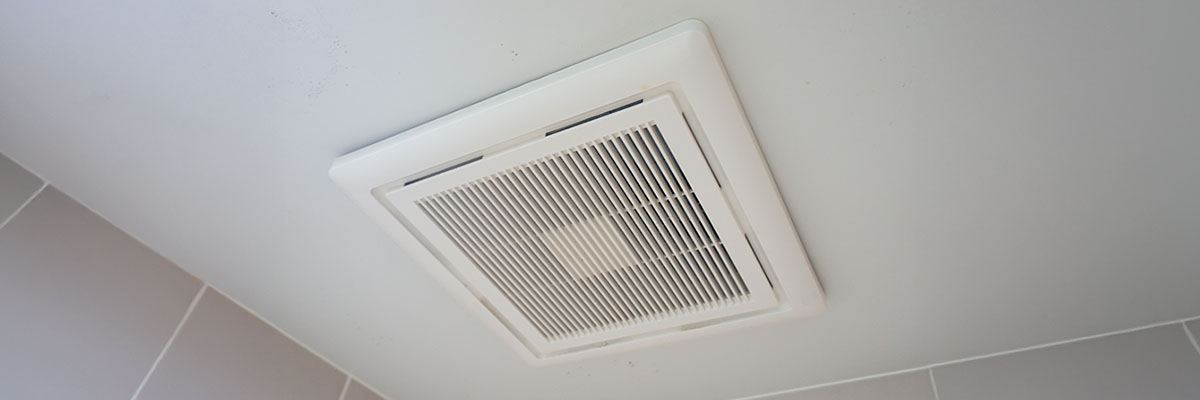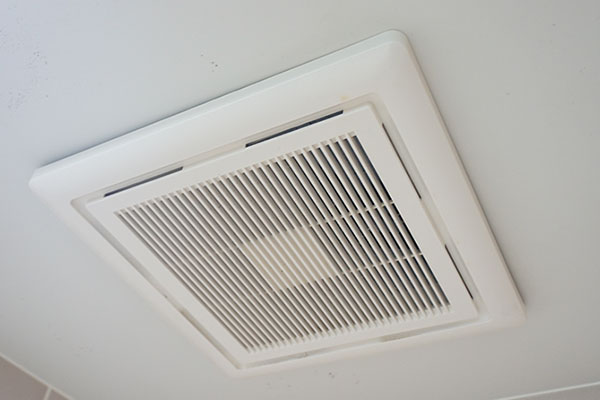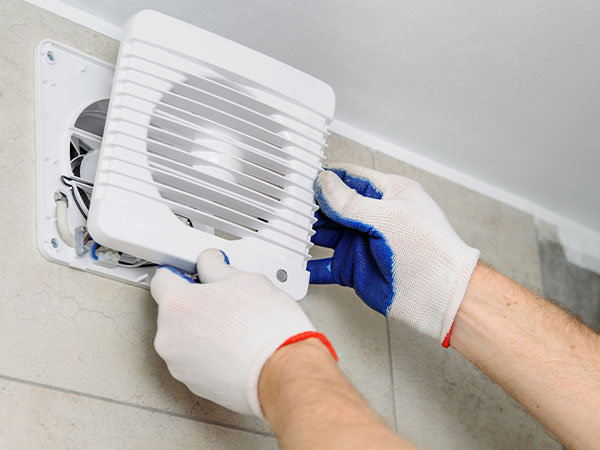

Why Every Bathroom Needs a Proper Bath Fan
A bathroom exhaust fan is one of the most important yet overlooked features in your bathroom. Whether installing a new bath fan or upgrading an old, noisy unit, the right system removes excess moisture and heat while keeping your bathroom fresh and free from lingering odors. Here's what every homeowner needs to know before selecting, sizing, and installing a bathroom fan that works efficiently and lasts for years.
What Are Bathroom Exhaust Fans?
A bathroom exhaust fan, often called a bath fan, is a small but powerful ventilation unit that pulls humid air, odors, and excess heat out of the room and vents it outdoors. Without proper ventilation, steam from showers can settle on walls and ceilings, leading to peeling paint, warped wood, and even mold growth that damages your home and poses health risks. The right fan and placement keep your bathroom fresh and moisture-free.
Types of Bathroom Exhaust Fans
- Ceiling-mounted – The most common style; draws steam upward and out through ductwork.
- Wall-mounted – Great for bathrooms with limited attic access.
- Inline (remote) – Installed in the duct run for ultra-quiet operation.
- Window-mounted – A practical choice for older homes without existing ducts.
6 Signs of Poor Ventilation
- Persistent humidity after showers
- Mold or mildew spots on grout or walls
- Musty or foul odors
- Peeling wallpaper or bubbling paint
- Stained ceilings
- Soft or warped flooring from moisture buildup


Mounting Locations and Why They Matter
- Ceiling: This is best for rooms directly under an attic or with easy overhead duct access. It's ideal for pulling rising steam straight up and out.
- Wall: This is perfect when there's no attic space or when ducting straight outside through an exterior wall is simpler than running ducts overhead.
- Window: This is useful in older homes or small baths where adding ducts would require major renovation. A window-mounted unit can be installed quickly and removed for maintenance.
Choosing the Right Size Bathroom Exhaust Fan
Getting the correct fan size is key to effective ventilation. A good rule of thumb is 1 CFM (cubic feet per minute) of airflow for every square foot of bathroom space.
- Quick math example: A 7-by-10-foot bathroom is 70 square feet, so you'll need a fan rated for at least 70 CFM.
- Multiple zones: If your bathroom has a jetted tub, a large walk-in shower, or a separate toilet room with its own door, you may need more than one fan to move enough air in each space.
- Duct size matters: Undersized or long ducts can restrict airflow, so match the fan to the duct diameter recommended by the manufacturer.
- Noise levels: Check the sone rating—lower numbers mean quieter operation (one sone is very quiet, four is noticeably loud).
- Extra features: Consider integrated lighting, humidity or motion sensors, heat lamps, and even speakers for added convenience and comfort.
Installing a New Bathroom Fan
Placement is key for maximum effectiveness if you're adding a new bath fan.
- Locate the moisture source: Position the fan near the area that generates the most steam, usually above the shower or bathtub. This ensures that humid air is captured before it spreads throughout the room.
- Venting options: Bathroom fans need to be vented to the outside, either through the roof or an exterior wall. Proper venting prevents moisture from being trapped in the attic or wall cavities, which could lead to mold, mildew, and structural damage.
Avoid venting into attics or crawl spaces—this is a common mistake that can cause long-term problems for your home.
Avoid venting into attics or crawl spaces—this is a common mistake that can cause long-term problems for your home.
4 Tips When Using Your Bathroom Fan
Even the best bath fan won't work properly if used incorrectly. Here are some simple tips to get the most out of your fan:
- Pre- and post-shower use: Turn the fan on five minutes before you start your shower and keep it running for at least 30 minutes after to remove lingering moisture.
- Boost airflow: Open the bathroom door or a window slightly after showering to help steam escape more quickly.
- Proper venting: Never vent the fan into an attic or crawl space—always route it to the outside to prevent moisture damage.
- Regular cleaning: Dust and debris can accumulate on fan blades and grilles over time, reducing efficiency. Clean your fan periodically to keep it running quietly and effectively.
A properly sized and installed bathroom exhaust fan makes a big difference in comfort, air quality, and the longevity of your bathroom surfaces. From reducing humidity and preventing mold to eliminating odors, the right fan keeps your space fresh and healthy. At McCoy's, we have a wide selection of bath fans and all the accessories you need to upgrade your bathroom ventilation, or bathroom in general, easily and efficiently. Your next bathroom project starts here—let us help you keep your space clean, dry, and comfortable.
